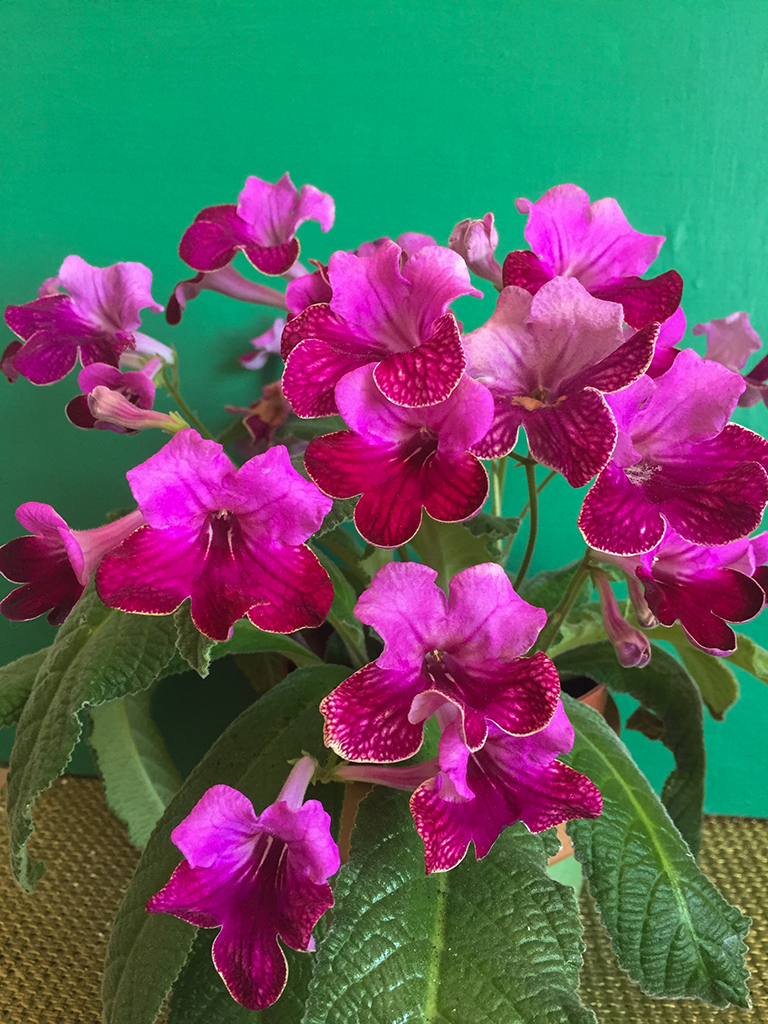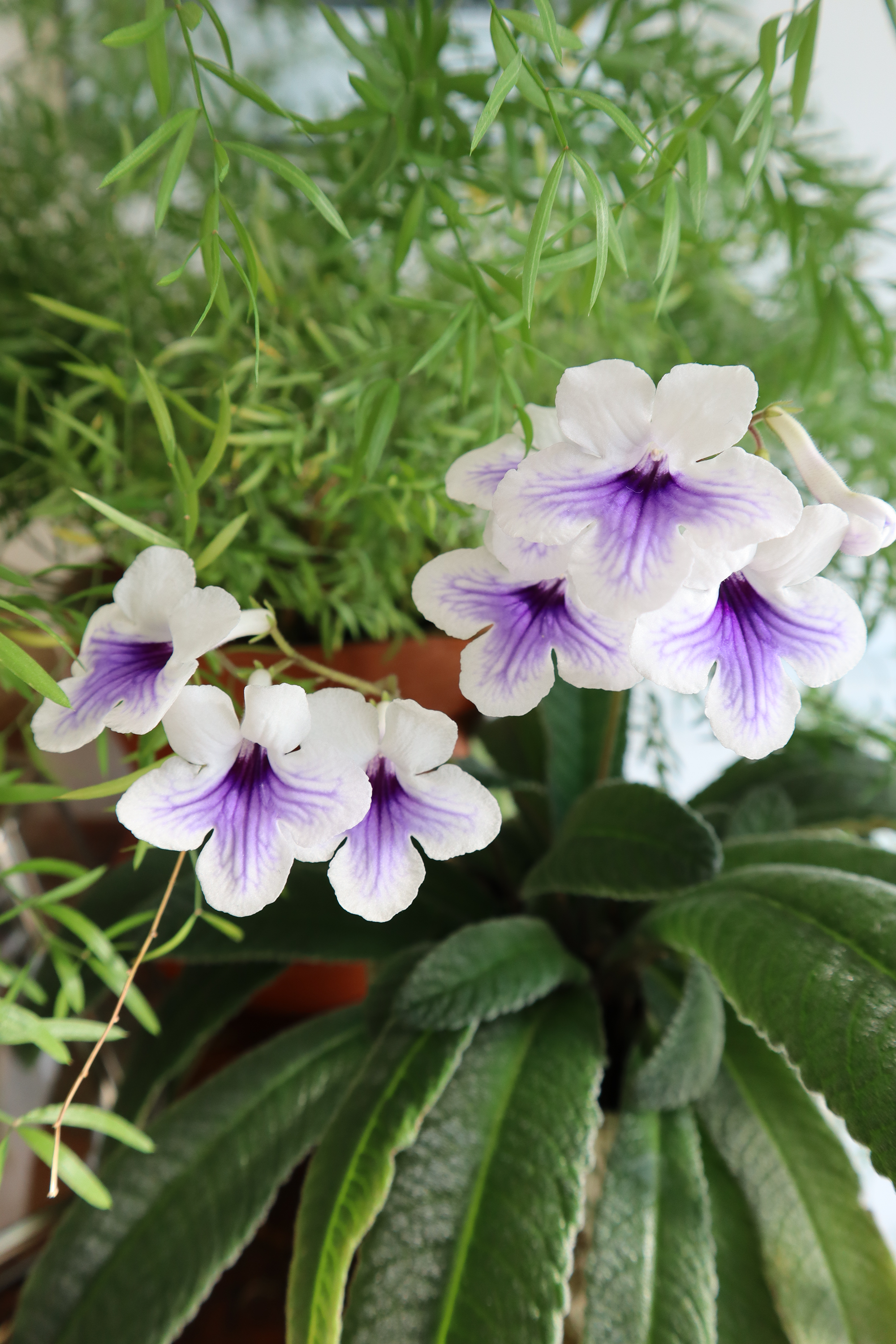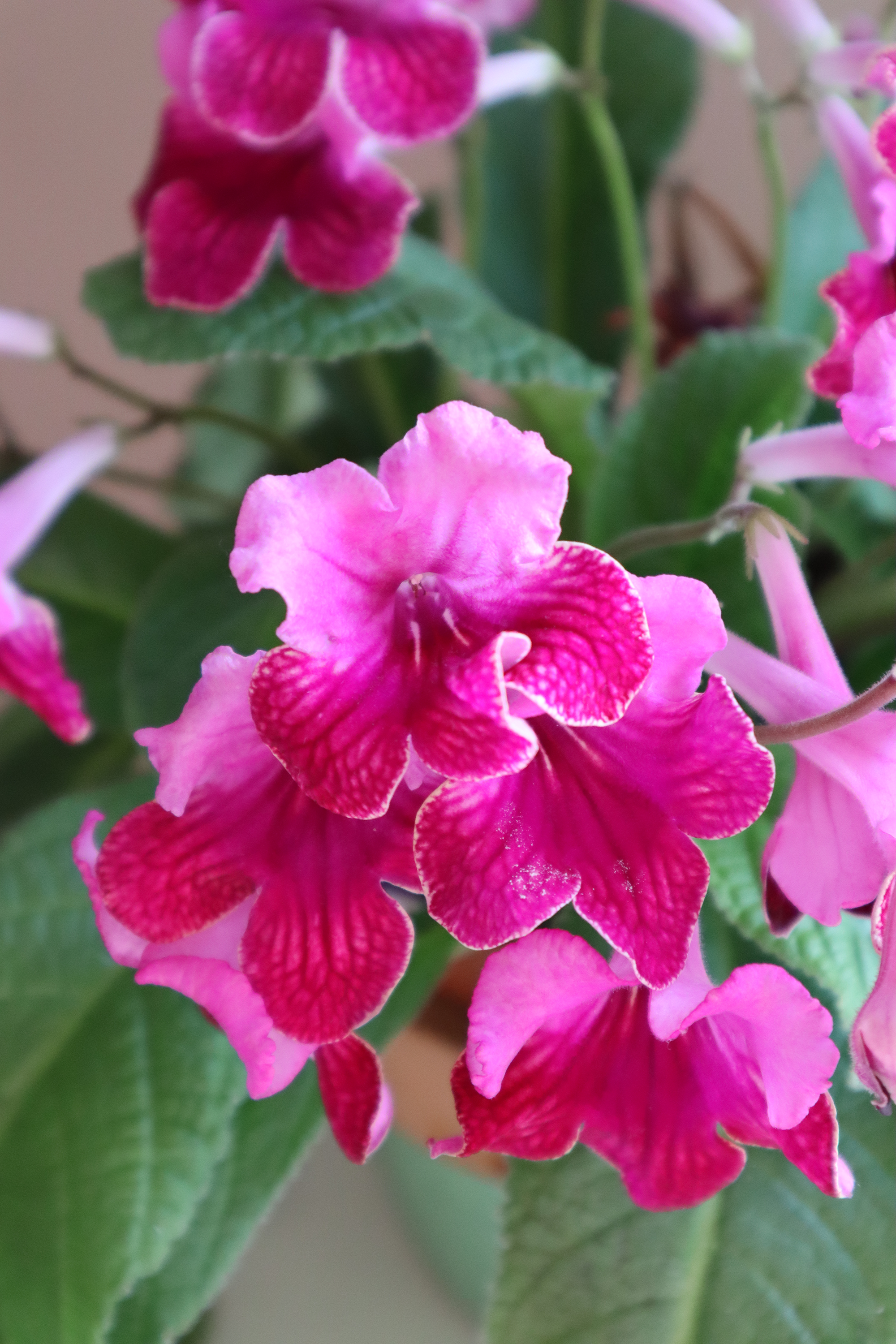Last summer, in a brief window between lockdowns, I found myself having a socially distanced ponder with an elderly gentleman in a trilby. We were at Batcombe House in Somerset, open for the National Garden Scheme, and had spotted a plant on a table that looked like a streptocarpus (cape primrose), but with smaller leaves and flowers. The gentleman fired up his plant identification app and confirmed that it was a species streptocarpus. The owner told me that it is available to grow from seed from Dibley’s Nursery, a streptocarpus specialist.
So that’s another plant on the wish list. They’re a plant you can’t help buying more of. The flowers are just so pretty, in shades of white, pink and vivid blues and violets, and smother the plant from spring until autumn.
They are are fairly easy to look after. As with many houseplants, they don’t like to be placed in a spot that gets bright sunshine (which fades the flowers and burns the leaves) but they do like bright light. I grow mine in the bathroom and in a bedroom, near east-facing windows.
They key thing – as with many houseplants – is not to water them too much or let them sit in a saucer of water. This will rot the roots and cause the leaves to wilt. It is fine to let the compost dry out between waterings – even though it may mean that (confusingly) the leaves will wilt when the plant really needs a drink (they soon perk up again). The older leaves have a habit of going grey-brown, especially towards the end of the season – you can either cut off the brown or just remove the whole leaf.
It’s best to repot the plants into fresh compost every spring, but don’t necessarily go up a pot size – the rootballs are often very small and do better slightly rootbound. Feeding with a high potash fertilizer once a week from spring onwards will encourage lots of flowers – I use Baby Bio but Derry Watkins of Special Plants (who has a beautiful collection) told me that she adds slow-release fertilizer granules to the compost in spring.



